The fandom of Japan: How one nation became a world leader in getting behind its team
It doesn’t matter what the sport is, Japanese fans are some of the most dedicated on the planet. Much like the giving of gifts, this wealth of cheering prowess is long-established in the country’s culture. By Alan Dymock

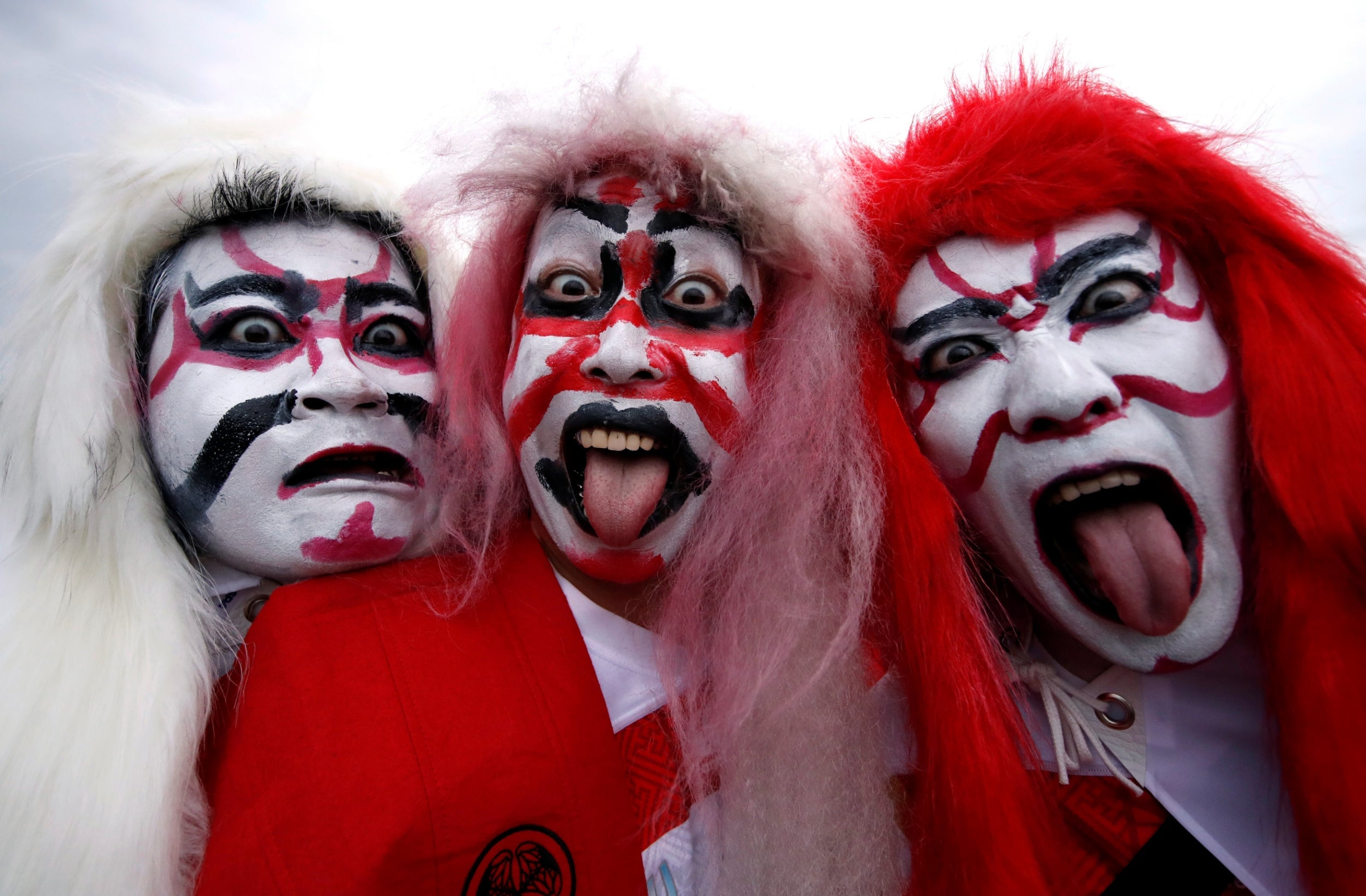
Celebrating his 26th birthday away from familiar, predictable New Zealand, All Blacks star Ardie Savea opted for the typical experience of enjoying a meal with team-mates. But there was another intervention on that relaxed day, among the bustle of a Rugby World Cup in Japan, which merited a brief mention during a press conference. “I actually got a present from a Japanese fan, which was really nice,” Savea said as an aside, before giving a sliver of more detail. “An old lady came into the hotel and dropped off some stuff for me and my little daughter, too – some stickers and a birthday card.”
It transpires that the ever-popular Kiwis had been regularly receiving gifts on their trip around Japan. Their hotel was littered with tokens and cards from the get-go, at their initial camp in Kashiwa. According to the press team with the All Blacks, neither they nor the World Cup powers had ever advertised where team digs were, yet, as one insider said with a shrug: “They just seem to find us.”
As squads and gaijin (foreign) supporters have discovered throughout their stay in Japan, the local sports fans do one thing better than almost anyone else in the world: get organised. At the halfway point of that World Cup, the game’s custodians revealed that more than 1.8m tickets had been sold for the event, with a 99 per cent take-up. There was another arresting figure. Around 200,000 replica Japan shirts had been sold.
When the hosts played South Africa in the knock-out rounds days later, it was watched domestically by 41.6 per cent (average) of the country – an increase of 2.4 per cent on an already almighty figure set the week before, that was said to “crash” through previous records.
This was at a time when the country was still reeling from the devastating affects of Typhoon Hagibis, a tropical monster that would go on to claim 80-plus lives and demolish livelihoods, homes and property. And there was more than just rugby going on. At times the event has overlapped with a volleyball world cup, the J-League football season and Japan’s beloved baseball finals. There are traditional endeavours like sumo to consider as well.

It can be a shock to the system, when you first encounter the planned madness of Japanese sport. Perhaps it needs a direct comparison. “I spent four years in Glasgow,” explains Daisuke Nakajima, a freelance writer who moved to the UK in 2005 with the express purpose of covering the adventures of football star Shunsuke Nakamura, with Celtic. He found the Glaswegian accent difficult to understand and the weather got him down, but he also found an affinity with the locals over humour, music and drink. He found warmth amid the drizzle.
First, Nakajima considers the vast TV figures and the sea of supporters wearing Japanese shirts. He says: “One character for Japanese (sports) fans is we support the national team. Say in Spain, someone won’t really support the national soccer team but they will support Barcelona or Real Madrid or Valencia. It’s the same in Scotland with Rangers and Celtic or Aberdeen. If you support Dundee or United, you put your energy into making them huge. For the Scotland team that energy is smaller.
“In Japan it’s a contrast. We totally support the national team. It’s our main priority.”
For the writer, who now focuses mainly on covering baseball’s Seibu Lions, this is the starting point for national fervour during a busy sporting period. He sees the successes of the Japanese rugby team, appreciating the joy their style of play brings, and recognises that it serves to electrify a latent support. Supporting the nation is expected. Then they excite and it makes it easier. As debate rages on in the country about how to capitalise on this boom in fandom, though, Nakajima points out that there will still be an understanding gap.
Had those fans just rocked up in their red and white-ringed jerseys, with a flag painted on their faces, the way the country supports sport means that it will not matter if they don’t understand rugby’s complexities. There are the gateway experiences of watching sport that can ease you into new surroundings.

There is the cheering. As Nakajima explains: “The character of the Japanese sporting fan is that they’re always singing – singing and chanting. It’s a totally different from the Scottish and British style. It’s the same with baseball. They are always singing and chanting.
“The Japanese fan thinks they can give power to the team and the player. So they are always singing and jumping.”
Football and baseball are known for uniform chanting. Even with some rugby games, there is an amusing crossover of planned outburst with the better-known western approach of chatting over a beer and having the odd spontaneous howl. The organisational side of things is hard to avoid, though.
“Japan is the Major League of cheering,” explains Ted Smith, a Canadian writer, baseball enthusiast and part of the “Fierce Lions of Hakata” – just one of Nippon Professional Baseball’s league-approved cheering groups that fill ballparks. They run the regional cheering operation for the Seibu Lions in West Japan. Smith first experienced Japanese ballpark atmospheres on a college exchange, when he went to what is known as Dento no issen – the traditional rivalry between Yomiuri Giants of Tokyo and the Hanshin Tigers. It blew his mind and he admits that the moment he watched it, it “changed the direction of my life”.
He went home and founded a marching band at his college. Then he took a teaching job in Korea. “I ended up on the cheering staff for the Seoul Heroes [a baseball outfit] and I was scouted by the cheering staff for the Seibu Lions,” Smith says. “That’s what brought me back to Japan. So I’ve more or less dedicated my life to this.
“I say that half-jokingly, but it had all the kind of overtones of scouting, you know. Somebody approached me at a game and they knew who I was. And he said: ‘I’ve seen your YouTube videos and I’ve seen what you’re doing in Korea.’ And that’s nice. But they wanted to know if I thought I’d be ready to step up to the big [leagues] in a sense.”
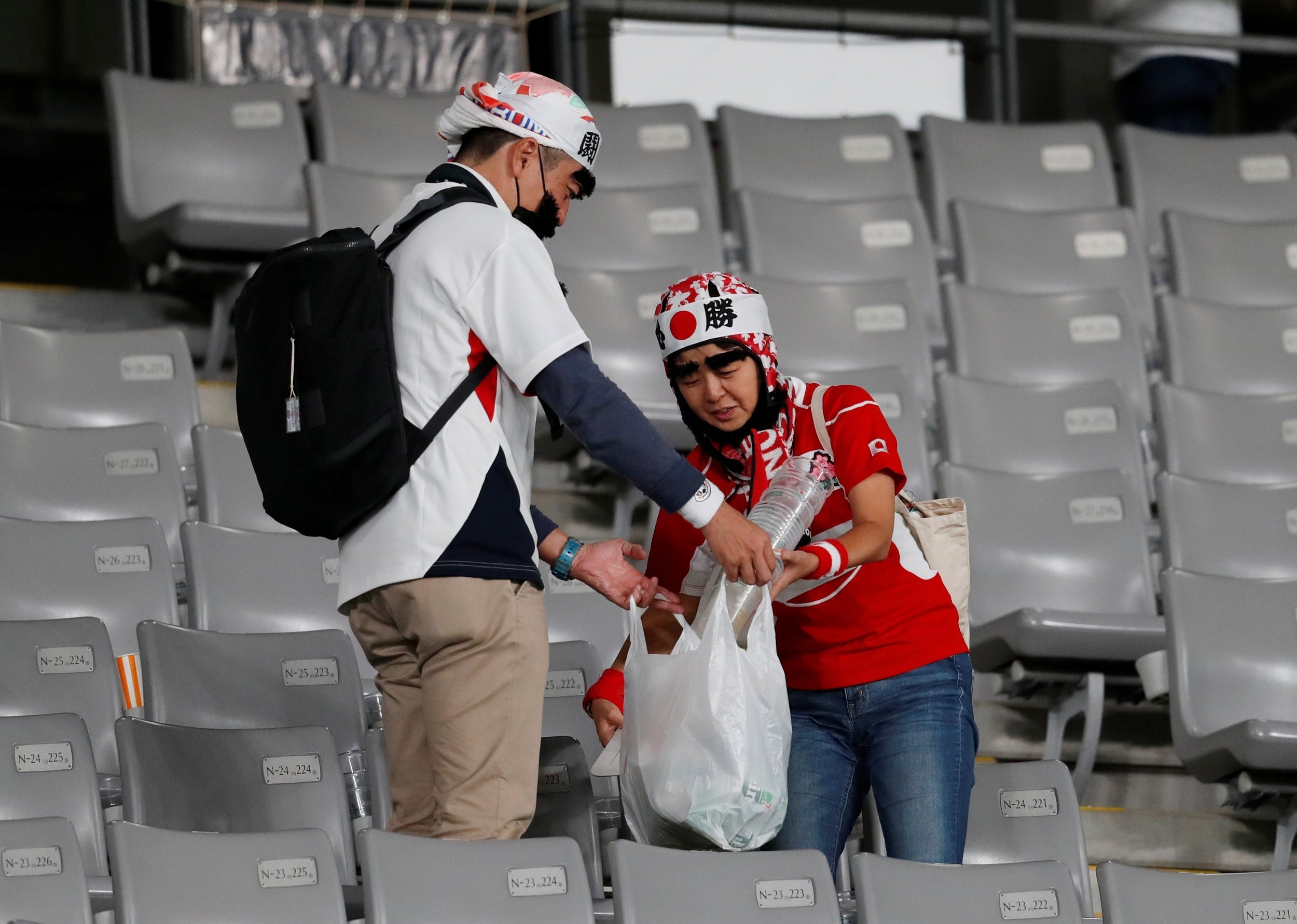
Much like the giving of gifts, this wealth of cheering prowess is long-established in Japanese culture. And there are characters at every turn. During the Rugby World Cup, visiting media have swarmed around “Bak-san”, a super-fan who has attended scores of matches with a match jersey of one of the competing sides painstakingly painted onto his bare torso, by his wife. On 3 October, he even attended two matches, sporting Fiji white and then later being daubed with Irish green.
Nakajima also tells the tale of “Miracle Game Nikki” (Nikki can mean older brother) a renowned fan of the Seibu Lions, who is familiar to many for his unique dancing style. Really named Takehiro Imoto, he leads a quiet life, works diligently in his office. Life in Japan is described by some as conservative, with certain social expectations and rules to adhere to. But at a sports ground, you can become someone else.
Baseball elsewhere in the world of course has its characters in the stands. Smith considers tales from the extinct Montreal Expos side, who had a fan that famously always reserved a seat for their dog or another known for playing impromptu violin recitals atop the team dugout.
“What really makes it Japanese is the level of organisation with the cheering stuff,” Smith then clarifies. “So every team has a bunch of different cheering clubs; these are private cheering clubs that are registered with the league. You have to go through a very strenuous application and screening phases. But if your group has passed, you can become an official cheering staff. Well, then you have permission to use drums, oversized flag poles, oversized banners, and most and best of all trumpets and trombones.
“I am a newbie here still – like, my immediate supervisor, the president of our cheering group, has been doing this for 35 years.”
Sport can be a lifestyle choice. An expensive one. There are more than 140 baseball games a season for any big outfit. It can dominate the papers, too. Football features, but it is not as prolific when it comes to fixtures and events.
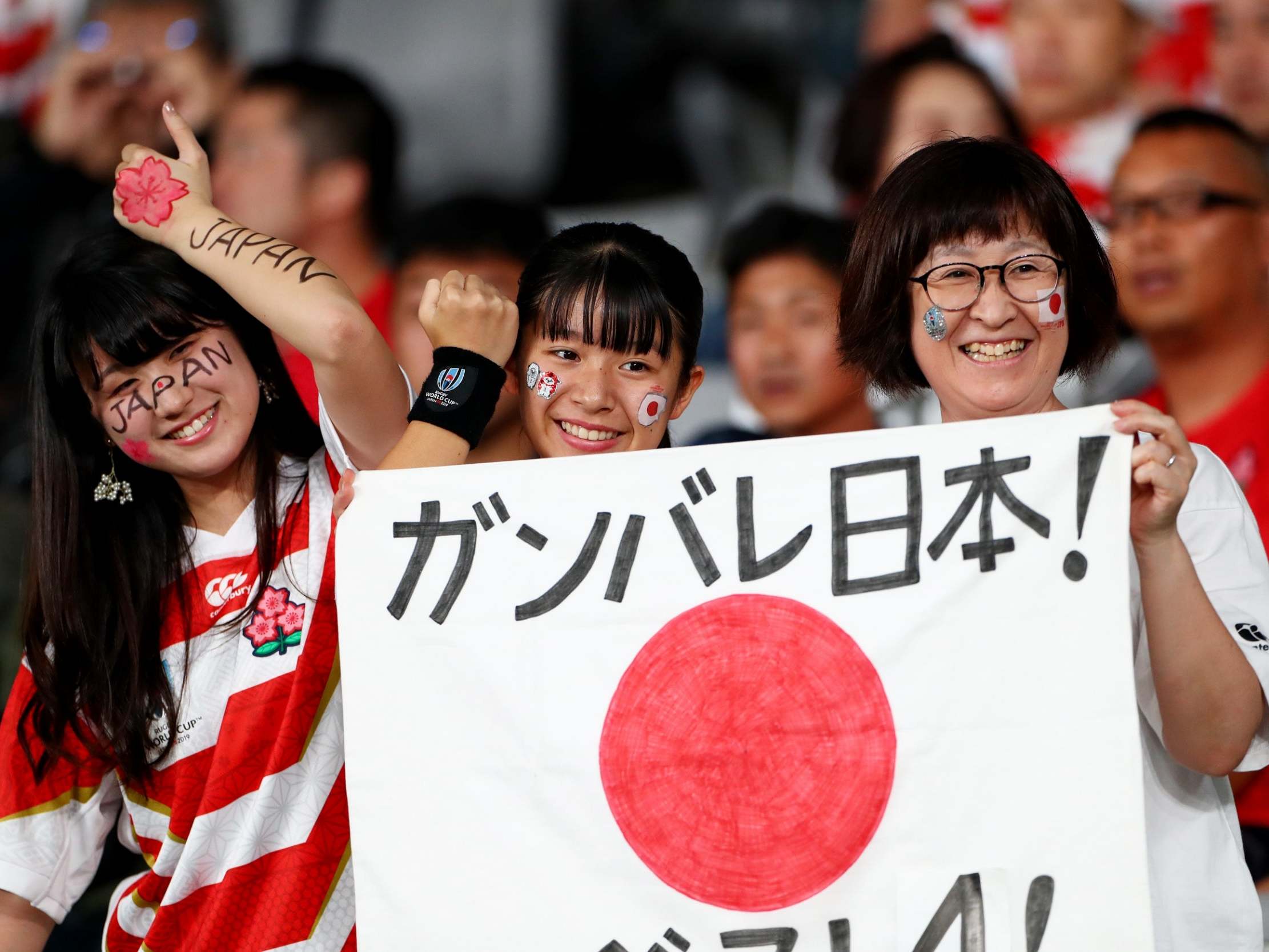
Some look down on the J-League for its manufactured derbies, claiming there are contrived rivalries like that of FC Tokyo versus Kawasaki Frontale, marketed as the “Tamagawa Clasico”. We are told it cannot draw as much genuine passion or even venom as Dento no issen, of which Nakajima believes supporters act more like the Old Firm rivals of Scotland, saying fans are more likely to scream “‘You’re shite!’ Or for their team: ‘You’re fantastic.’”
However, like with rugby fighting to grow here, does it matter? What is contrived now may not be so 20 years from now. Plus, football’s appeal is undeniable, regardless of how many fixtures other sports have.
“It’s huge here, especially as it’s gotten a lot of international interest,” says Dan Orlowitz, the Japan Times’ man on football. Japanese players moving into major European teams is no longer a novelty. And some things travel back the other way. This is, after all, the global game we are talking about. Orlowitz continues: “The way in which people approach supporting soccer is a really interesting blend. Because it is this amalgam of the traditional Japanese, company club support culture, or high school support culture, plus cheering styles that they’ve taken from England, from Italy, from Spain, from Germany, from Brazil and from Argentina.

“So you listen to the songs, and it’s the melodies that you’ll be very familiar with. It’s a lot of the international pop hits, but then you have some support groups who will use Japanese pop standards and songs.
“I saw Brentford play back in August and that’s a lot of short, spontaneous chants that last a few seconds. Here it is for 90 minutes straight. The fans will start singing before kick-off and they will keep singing until the final whistle and sometimes a little bit after that. It’s a colourful atmosphere. It’s very friendly to people of all ages, all genders. You can come by yourself, you can bring your family behind the goal. You can bring your parents, you can bring your grandparents behind you. Bring your kids, although in most cases, if it’s a young kid, then sometimes the ‘core ultras’ will warn parents that maybe your kids shouldn’t be right at the centre of things, but on the outskirts, fine. But there’s no violence; no hooliganism.
“I’ve been to games in England, I’ve been to games in Italy, Turkey, the United States and I tell people that the J-League is, in terms of the atmosphere and the match-day experience, one of the top five leagues in the world.
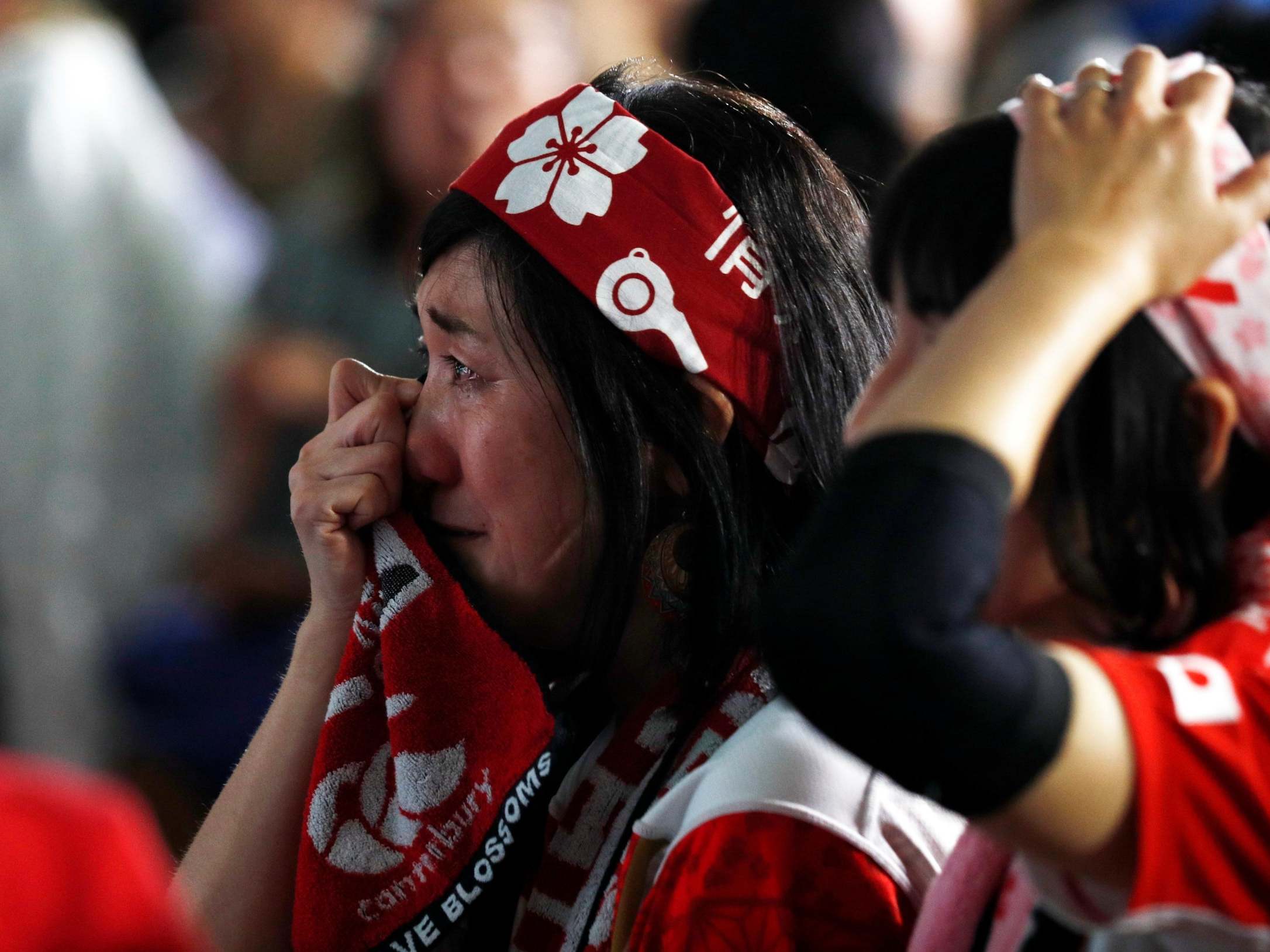
“That is a hill I will die on because it’s colourful, everyone comes with the uniform, there’s tons of flags. The tifos [large banners, often with statements on them] are a bit contrived because a lot of clubs just use the same pullover banners over and over, but I love it. I’d rather argue who has the best tifo than who is better out of Ronaldo or Messi.”
Which may all sound sedate and lovely, but football in Japan has not been totally without issues. In 2014, Urawa Reds were forced to play a game behind closed doors because fans hung a “Japanese only” banner during a game in Saitama. The incident came amid growing fears over nationalist sentiments, with it suggested the banner was meant to discourage foreign spectators from sitting near a group of core supporters. It is worth pointing out that one of the most trumpeted criticisms of rugby, by a minority in Japan during the World Cup, is that the national team has too many foreigners in it.
I tell people that the J-League is, in terms of the atmosphere and the match-day experience, one of the top five leagues in the world. That is a hill I will die on because it’s colourful, everyone comes with the uniform, there’s tons of flags
Urawa were also involved in an incident with Gamba Osaka in 2008 when a projectile hit a kid, and fans lost it. Some also have a caginess about dealing with some core supporters of the Kashima Antlers, a powerhouse club at the moment. But Orlowitz says that none of this compares to Europe. There are no streets lined with police horses and it’s not uncommon to see couples at games sporting different shirts of the competing teams, he suggests.
Demographics vary from club to club. Some have a much older fanbase, some are loved by new generations. At one point in the early 2010s, Cerezo Osaka experienced a boom in support from younger women, which some attribute to the rise of a generation of young stars coming out of the club’s academy. Cerezo began specifically marketing to teenage girls, women in their twenties and even thirties. Today it is believed that J-League crowds are made up of over 30 per cent female support. In the past it has been over 40 per cent.
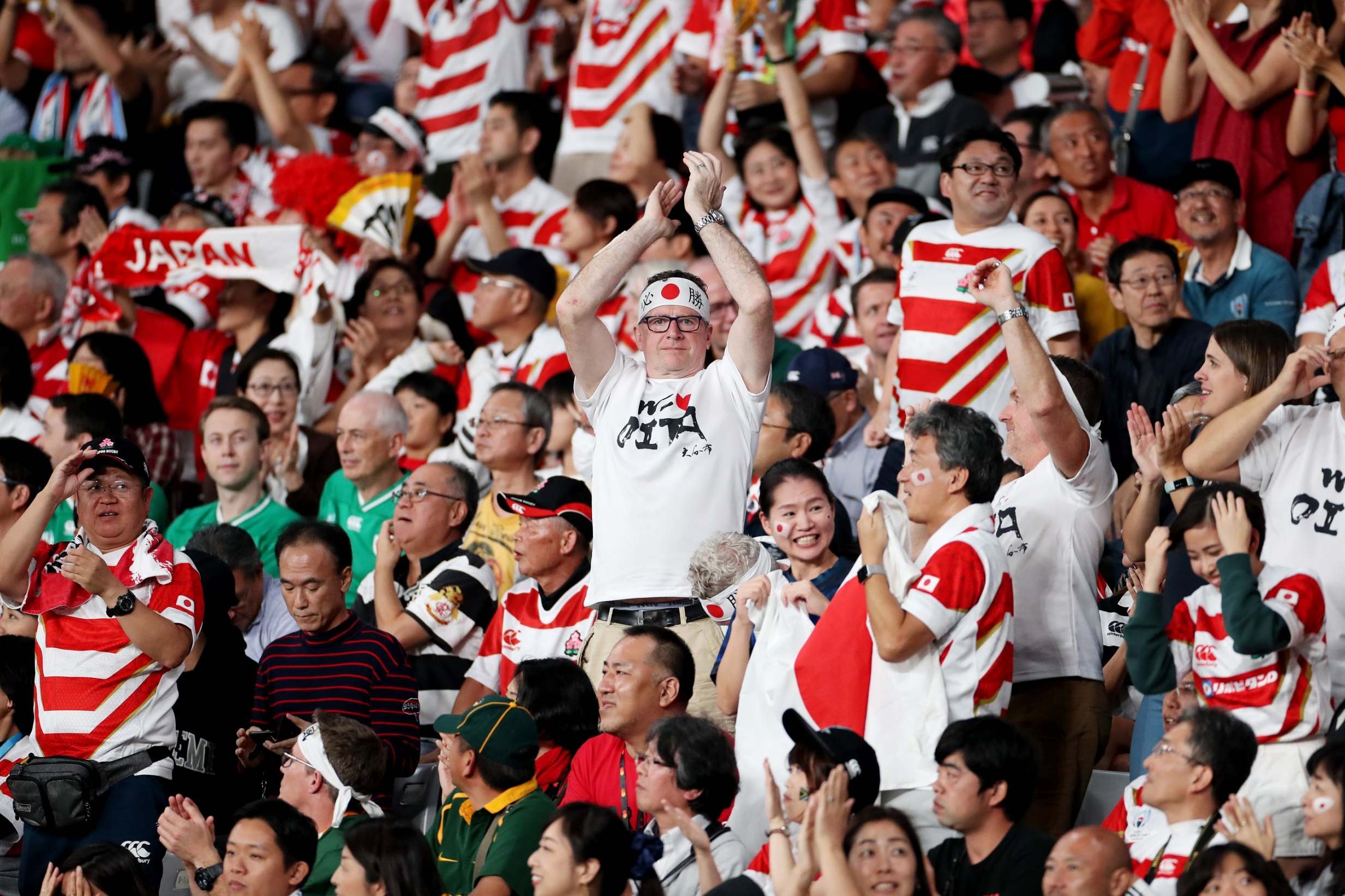
In their first season in the first division of the J-League, it was believed that V-Varen Nagasaki had an almost 50-50 split of male and female fans for some games. There is much more to travelling culture in football here too, with elements of day trips and eating local cuisines tied in. Some jokingly call FC Tokyo fans “the Locusts” because they zip in and devour what they can before hauling out again.
However, the idea of appealing to different demographics is an interesting one when you look at the spread of sports in Japan. It throws up questions about the traditional pursuits. Sumo is seen as a last bastion of old-school, conservative Japan. Yet, while the in-competition traditions and unyielding structures of the pursuit remain unchanged, in recent years the landscape around it has morphed.
“In the Nineties, there was a massive boom and it was really popular but then from the end of the Nineties to about three or four years ago, it went through a down period and really wasn’t that popular,” says John Gunning, a TV presenter and columnist on sumo. “But from about three, four years ago it’s exploded and now it’s more popular than it ever was.”
About 20 years ago, Irishman Gunning visited Japan on a holiday. Much like Ted Smith, he fell in love. He quit his job and within eight months was back in Japan, without a word of the language in his head, looking for a new beginning. The only thing he could understand on TV was sumo, and when his football career was ended by injury, the man of near 60kg realised that he had been won over by the pageantry and violence of sumo. He would take it up, putting his body through the grinder but coming out the other side twice the size and a three-time representative of his home country in the world championships. He has been immersed ever since.
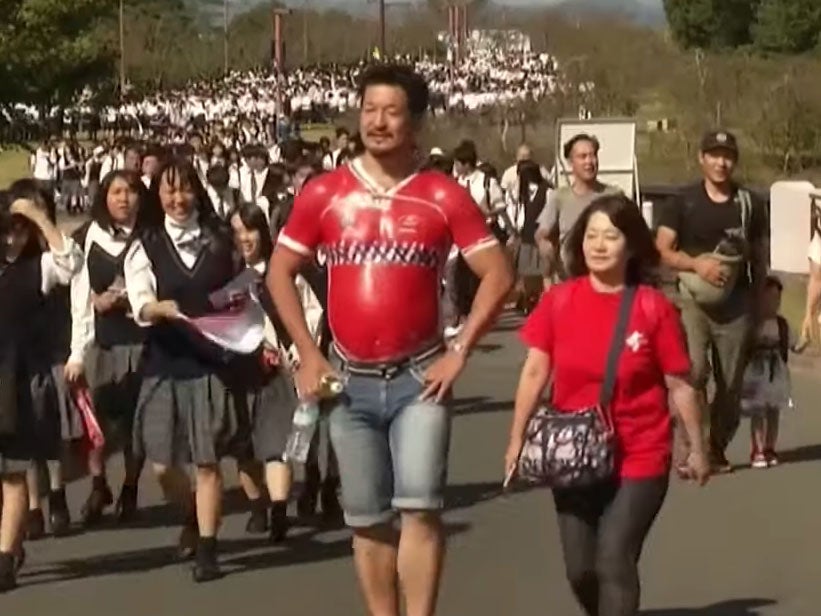
So how different are the crowds? In a beat, Gunning continues: “The fanbase now has a lot of young people, it’s a lot of young women – it’s very popular with them. So it’s changed. Now you can’t get tickets for love nor money.”
There was no Japanese champion between 2006 and 2016, and yet there is a belief that the quality of foreign imports to the sport raised standards. Mongolians and Georgians began to become key players, but there was more to it than that too. Publications like Nikkei have reported on the rise of rikijo (female fans of rikishi, elite wrestlers) as Gunning alludes too. But female participation has also been sanctioned. A new generation has stepped in to both observe the traditions and cheer on the heroes of this ancient way.
Gunning believes that the sport has also blown up internationally, claiming there has been a 600-800 per cent increase in international coverage in the last few years.
He goes on, with further explanation: “It’s like a lot of sports – being able to see it (is important). It’s when it’s highlights on YouTube, and the TV companies are putting up extended highlights, people can actually watch the sports. And then when they can go and watch it live, which we’ve been able to do recently, abroad, for free. Yeah, that just drives the numbers through the roof.
“It’s also so simple to understand. But it’s so different from any other sports. It really hooks people immediately. So there’s been exponential growth in the fanbase of the last few years, for sure international.
In the pantheon of explosive sports, sumo has a unique position. Lovers and reporters on the lifestyle will look on with interest as it comes to terms with a new global popularity
“They have been very proactive over the last few years about social media and because the wrestlers are young guys, like in any sports, they’re mostly young men.
“They’re all of this generation who grew up with social media and the internet. It’s been an integral part of their lives since they were born essentially. And yeah, they’re mostly on Instagram, especially the younger guys.
“There are live videos and sharing, so there’s an awful lot more direct interaction with fans. They do tours around the country and stuff like that. Sumo would have been seen as a kind of inaccessible sport before.”
In the pantheon of explosive sports, sumo has a unique position. Lovers and reporters on the lifestyle, like Gunning, will look on with interest as it comes to terms with a new global popularity, and how issues like concussion affect this fabled sport of emperors. With lots of new eyes comes fresh scrutiny. Hopefully a lot of yearning to understand, too. Rugby definitely wants a boom, post-World Cup. The Olympic Games are on the way to Tokyo in 2020, and sevens rugby will be part of that. In a world where major sporting events are meant to leave a legacy, Japan’s sporting governing bodies have a responsibility to make the most of this new or renewed attention.
Baseball will have a one-off run at the Tokyo Olympics, thanks to its popularity in Japan. A nationwide lottery for tickets created feverish demand. But we know what to expect – and to cheer for – at the baseball. This is a place where fandom thrives, but there is also a tension between the traditional and the new. In a country that craves order and clings to the conservative, let’s see what the rest of Japan’s sports fans do next.
Join our commenting forum
Join thought-provoking conversations, follow other Independent readers and see their replies
Comments